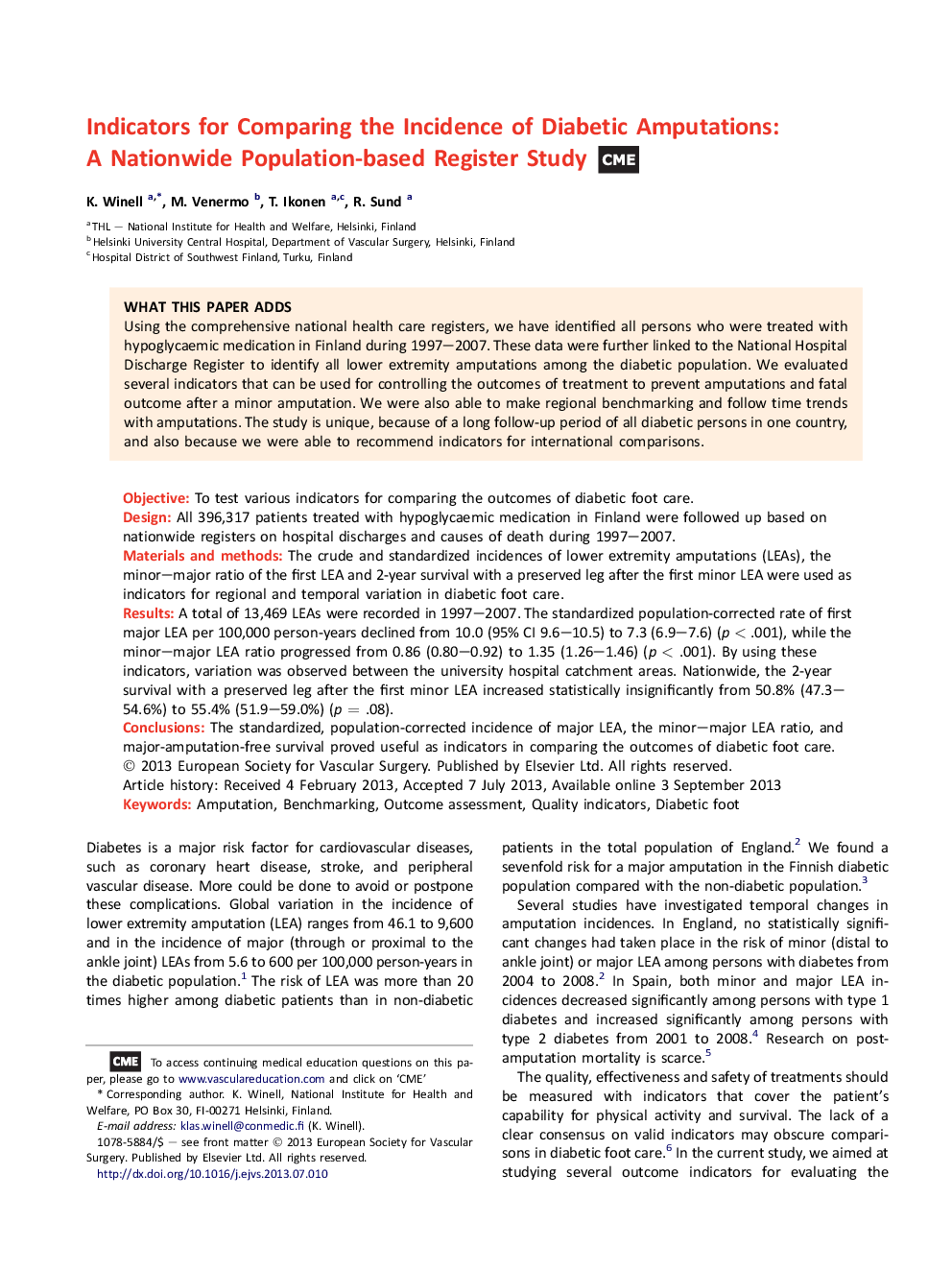| Article ID | Journal | Published Year | Pages | File Type |
|---|---|---|---|---|
| 2912192 | European Journal of Vascular and Endovascular Surgery | 2013 | 6 Pages |
ObjectiveTo test various indicators for comparing the outcomes of diabetic foot care.DesignAll 396,317 patients treated with hypoglycaemic medication in Finland were followed up based on nationwide registers on hospital discharges and causes of death during 1997–2007.Materials and methodsThe crude and standardized incidences of lower extremity amputations (LEAs), the minor–major ratio of the first LEA and 2-year survival with a preserved leg after the first minor LEA were used as indicators for regional and temporal variation in diabetic foot care.ResultsA total of 13,469 LEAs were recorded in 1997–2007. The standardized population-corrected rate of first major LEA per 100,000 person-years declined from 10.0 (95% CI 9.6–10.5) to 7.3 (6.9–7.6) (p < .001), while the minor–major LEA ratio progressed from 0.86 (0.80–0.92) to 1.35 (1.26–1.46) (p < .001). By using these indicators, variation was observed between the university hospital catchment areas. Nationwide, the 2-year survival with a preserved leg after the first minor LEA increased statistically insignificantly from 50.8% (47.3–54.6%) to 55.4% (51.9–59.0%) (p = .08).ConclusionsThe standardized, population-corrected incidence of major LEA, the minor–major LEA ratio, and major-amputation-free survival proved useful as indicators in comparing the outcomes of diabetic foot care.
